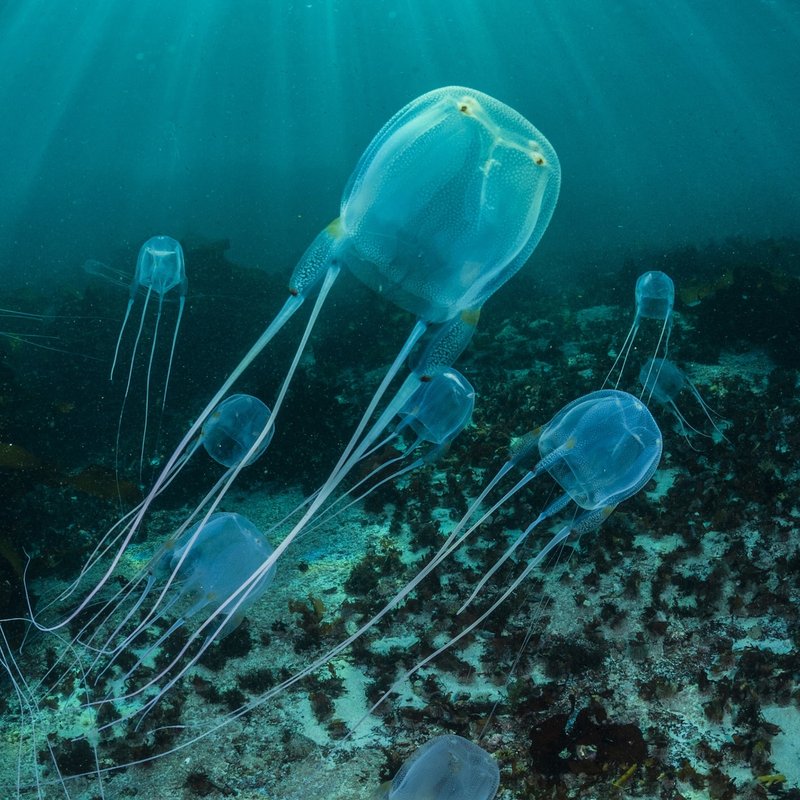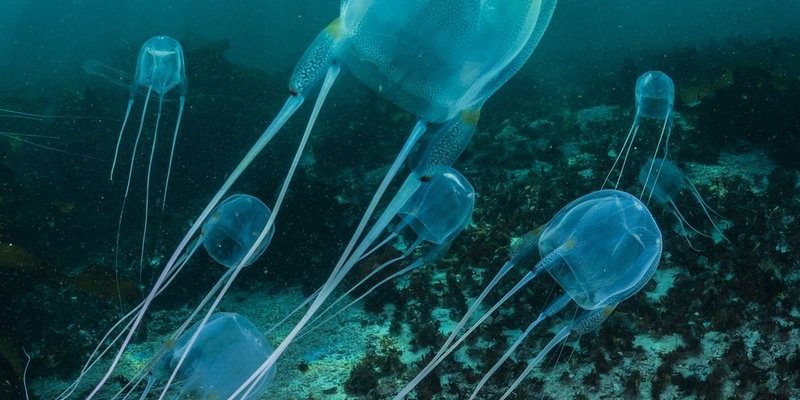
The conversation around the conservation status of box jellyfish can be complex. While they seem abundant in certain areas, various factors could threaten their survival. Imagine walking through a lively forest filled with diverse plant life. If certain species were wiped out, it would affect the entire ecosystem. Similarly, if box jellyfish populations dwindle, the balance of marine life could be at risk. In this article, we’ll dive into the status of box jellyfish, their conservation needs, and the latest updates in efforts to protect them.
What Are Box Jellyfish?
Let’s start by getting familiar with these fascinating creatures. Box jellyfish belong to the class Scyphozoa and, as I mentioned, have a distinctive cube shape. They can be found in tropical waters, particularly around northern Australia and in the Indo-Pacific region. Their tentacles can stretch up to 10 feet or more, trailing behind them like long ribbons. These tentacles hold specialized cells called nematocysts, which are responsible for their painful sting.
Box jellyfish aren’t just pretty faces, though. They play a crucial role in the marine food web, serving as prey to certain species of fish and other marine animals. This delicate balance highlights why understanding their conservation status is so important.
Are Box Jellyfish Endangered?
You might be asking, “So, are box jellyfish really endangered?” The answer isn’t straightforward. Currently, box jellyfish aren’t classified as endangered on a global scale. In fact, they often appear to thrive in their preferred environments. However, that doesn’t mean they’re out of the woods.
Potential threats to their populations come from various sources. For instance, climate change can disrupt ocean temperatures and currents, affecting the habitats that support jellyfish life cycles. Additionally, pollution and habitat degradation pose significant risks. Overfishing can also impact the food web, affecting not just box jellyfish but many other marine species as well.
Conservation Efforts for Box Jellyfish
Given the potential threats, conservation efforts for box jellyfish involve a multifaceted approach. Scientists and marine biologists work to monitor jellyfish populations and understand their behavior. This research is crucial for developing strategies that can help protect them and their habitats.
Some initiatives focus on creating marine protected areas (MPAs). These designated zones help to limit human activities like fishing and pollution that could harm jellyfish populations. In areas where MPAs are established, researchers have observed healthier ecosystems, which contribute to the sustainability of box jellyfish as well.
What’s the Role of Research in Conservation?
Research plays a vital part in understanding the health of box jellyfish populations. Studying these creatures involves monitoring their life stages, breeding patterns, and habitat preferences. Scientists use various methods, such as tagging and tracking, to gather data about their movements and behaviors.
Here’s the thing: the more we know about box jellyfish, the better we can protect them. For example, understanding their migration patterns can help identify critical habitats and inform conservation strategies. This is why ongoing research is so important—it’s like having a treasure map that guides us towards better ways to care for our ocean friends.
The Impact of Climate Change
Climate change is a pressing concern for all marine life, including box jellyfish. As ocean temperatures rise, it can lead to shifts in jellyfish populations and their distribution. For instance, warmer waters can create an environment where jellyfish thrive more than other marine species, leading to population explosions, often referred to as “jellyfish blooms.”
These blooms can have a cascading effect on the ecosystem. They can outcompete fish for food and even disrupt local fisheries. It’s a bit like an invasive plant species taking over a garden; once they start spreading, it becomes tough to control their growth.
Community Involvement and Awareness
Conservation isn’t just about scientists and policymakers; community involvement is essential. Raising awareness about the importance of box jellyfish and their role in the ecosystem helps inspire action. Local initiatives that promote clean oceans and responsible fishing practices can create a ripple effect in protecting these creatures.
You might see community groups organizing beach clean-ups or educational events aimed at highlighting the beauty and significance of jellyfish. These efforts not only protect box jellyfish but also engage the public in broader conservation issues.
The Future of Box Jellyfish Conservation
Looking ahead, the future of box jellyfish conservation will depend on collaborative efforts between scientists, communities, and governments. While they may not be endangered right now, it’s essential to be proactive. Ongoing research, habitat protection, and public engagement will play a pivotal role in ensuring these unique creatures thrive for generations to come.
Just like in any ecosystem, every little action counts. By understanding their plight and working together, we can contribute to a healthier ocean and hopefully keep box jellyfish around for many more years.
In conclusion, while box jellyfish currently don’t fall into the endangered category, we should remain vigilant. The ocean is a dynamic environment, and various factors could change the status of these fascinating creatures. By staying informed and involved, we can help make a difference for box jellyfish and the entire marine ecosystem they inhabit.

